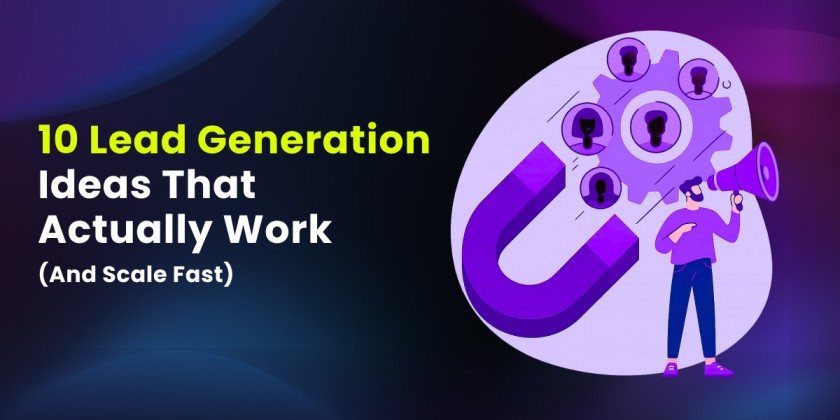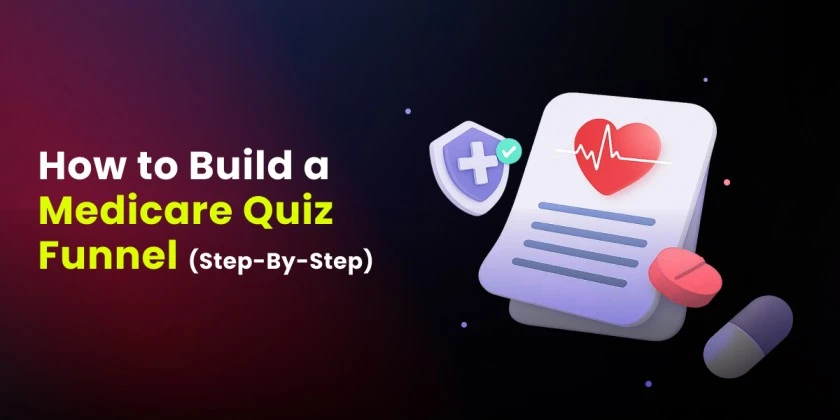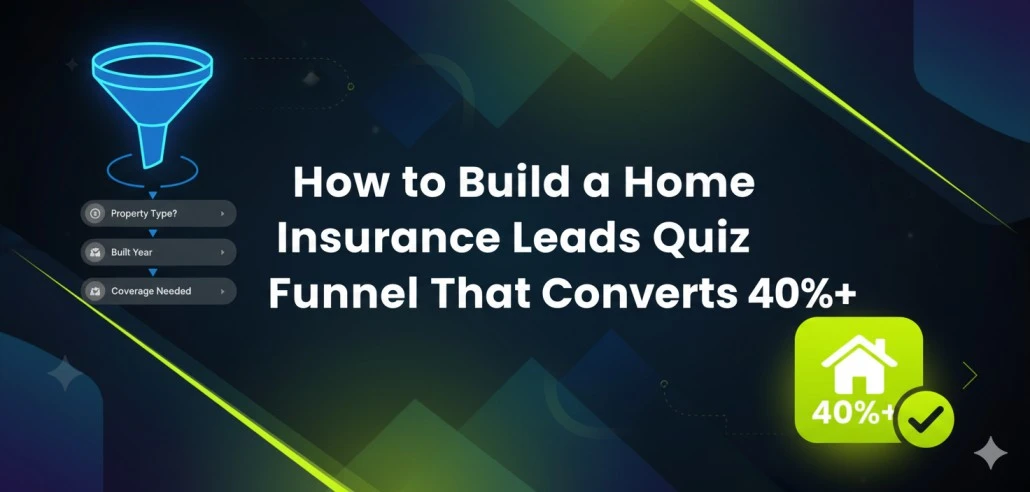Running a lead generation campaign in 2026 has become easier with the help of various tools that aid marketers from planning to implementation.
However, running a successful campaign isn’t easy these days. You’re fighting for your audience’s attention against hundreds of other campaigns. This takes lots of preparation and creative thinking.
In this article, we’ll walk you through all aspects of lead generation. We’ll show you step-by-step how to build and run a campaign that works. We’ll also cover effective marketing strategies you can actually use.
To make things clear, we’ve included real examples that show how these ideas work in practice.
Jump to Section:
Key Takeaways
- Lead generation is the first step of a successful marketing funnel.
- A lead generation campaign doesn’t end when users give you their emails; it’s a continuous effort to provide them with valuable content.
- Follow the 7-step process of a successful lead gen campaign:
- Set up campaign goals
- Establish your ideal customer profile
- Qualify leads
- Create compelling lead magnets
- Choose an effective marketing strategy
- Analyze campaign results and calculate ROI
- Nurture leads
What is Lead Generation?
Leads are potential customers who have shown interest in your company’s products or services. Lead generation is the strategic process of attracting and converting casual browsers into leads.
For example, a skin care brand (let’s call it SkinGlow) launched an ad about its newest products. Two girls named Rachel and Monica see these ads. At this point, they are an audience.
Monica has heard about SkinGlow but hasn’t had the chance to try their products. She clicks on the ad, sees a promotional sample giveaway, and quickly signs up. At this point, Monica is now a lead.
On the other hand, Rachel clicks on the ad, doesn’t recognize the brand, and promptly exits the landing page. While she’s not a lead yet, she has shown interest.
The above example shows the process of generating leads.
What is a Lead Generation Marketing Funnel?
A lead generation marketing funnel is a structured framework. It maps a potential customer’s journey from their first interaction with your brand to becoming a paying customer.
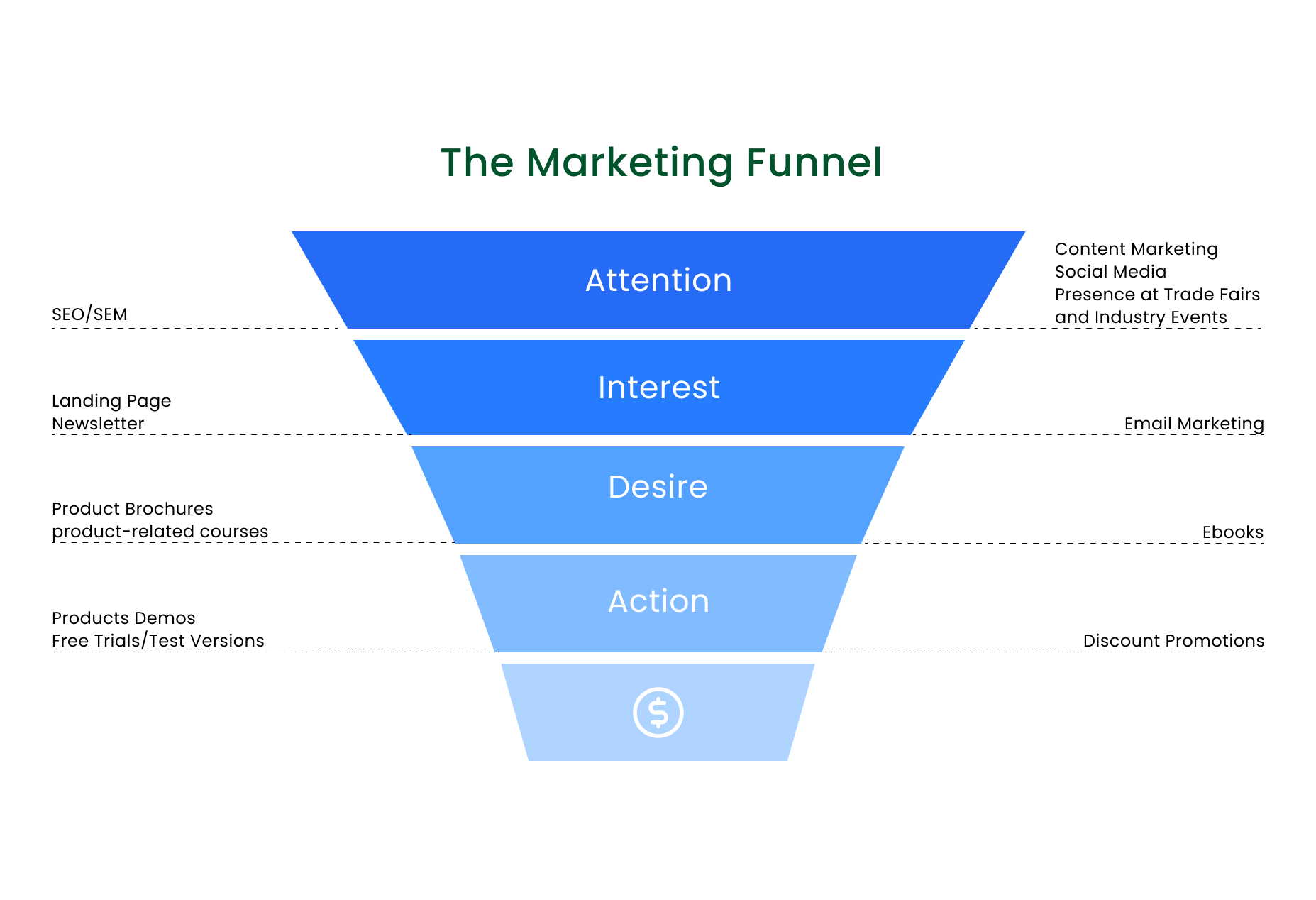
The funnel shape represents the natural narrowing that occurs as prospects move through the buying process. Fewer people advance to each subsequent stage until only a percentage of initial leads become customers.
Despite appearing random on the surface, buying decisions follow a predictable path. Marketers developed the lead generation funnel concept to visualize and influence this journey.
Within a funnel is a series of lead generation campaigns. Unlike B2C companies that might focus on immediate sales, B2Bs’ long sales cycle requires an evergreen source of business leads. This is why a marketing funnel should be in place to keep this whole process running.
This is not to say that B2Cs don’t use lead generation campaigns. Both B2B and B2C businesses can benefit from lead generation and effectively funnel prospects into qualified leads, and eventually convert them into sales.
How a Successful Lead Generation Campaign Looks: An Example
The thing about a business is that your prospects don’t turn into customers in just one click. It’s great when they do! But more often than not, they need more interaction with your brand before deciding to buy. They have this whole buyer’s journey ahead of them that you will nurture through various marketing efforts.
Here’s an example scenario comparing two lead generation processes from different companies:
Move Inc. vs Transport Services
Move Inc. has a lead capture page with a video on how to prepare for a relocation. However, it’s not working well, so they turned to influencer and affiliate marketing as part of their lead generation strategy.
In their marketing campaign, Move Inc. partnered with an organization expert to produce videos on preparing for relocation, from packing things to hiring a trusted service provider (like them). Moreover, the expert promotes a 10% discount link when availing services from Move Inc.
Enter Joey. He is about to relocate to another state in three months. He’s already looking for a moving company but is still in the preparation stage.
While scrolling through his Instagram feed, he came across the expert’s viral Reels and found the complementary guides in the blog helpful. This interaction with the expert brought Joey targeted display ads from Move Inc.
He’s not yet set to hire a moving company, but he’s already weighing options, so he clicks Move Inc.’s link. When Joey gets to the landing page, he is offered a free quotation plus a 10% discount. He thinks that’s a good deal, so he signs up for a quote and the discount code.
For due diligence, Joey still looked for other moving companies and found Transport Service. He clicks on their website and sees that the only way to contact them is through an email or a call. He does that and sends an email asking about their services. He gets a generic, “We’ll get back to you” reply.
As a service-qualified lead for Move Inc., Joey will receive emails with valuable content about relocating and learn more about their service via their newsletters. On the other hand, Transport Service only responded to his email with their packages. No follow-up whatsoever.
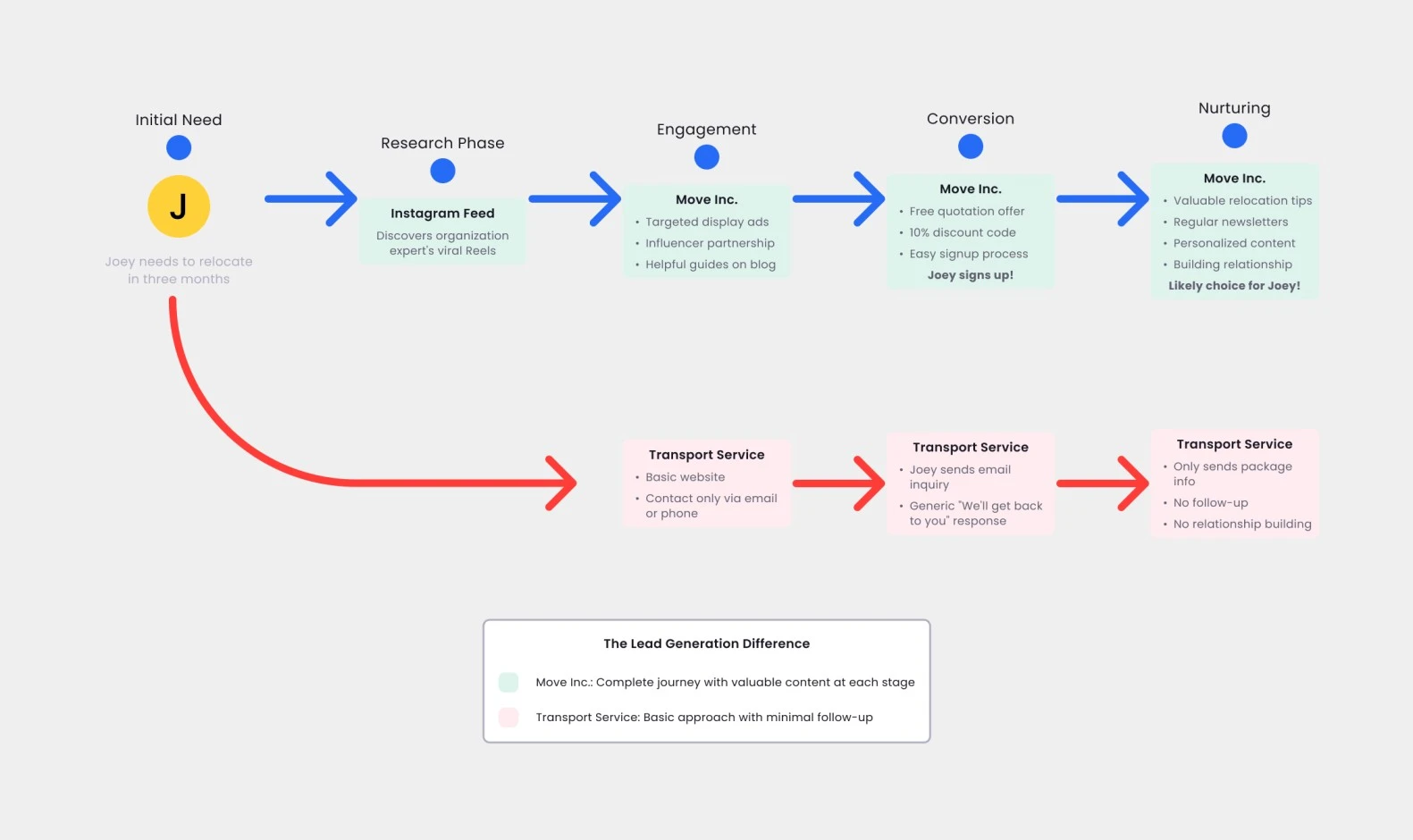
By the time Joey needs to hire a moving company, which company is he more likely to remember and inquire about? Based on what we’ve seen so far, Joey will most likely choose Move Inc.
A successful lead generation campaign doesn’t end with getting your customer’s information. Leads should be nurtured throughout the sales process. Move Inc. created a whole process to help Joey relocate. This p++rocess of building customer relationships is what separates them from their competitors.
The 7-Step Process to Run a Successful Lead Generation Campaign
So, how can you apply this to your lead generation campaigns? Let’s break down the seven-step process of running one:
1. Set Clear Campaign Objectives
This first crucial step provides direction and purpose for all later campaign activities. Instead of vague goals like “generate more leads,” specify clear targets.
For example, aim to “acquire 200 qualified leads from the manufacturing sector within 60 days at a cost below $30 per lead.”
This level of detail creates accountability. It also helps you determine if your campaign is truly delivering results.
To better define your objectives, ask yourself these critical questions:
- Who is your target audience?
- Through which channels will you reach them?
- What specific action do you want prospects to take?
- What is your lead magnet?
- How and when will follow-up occur?
- Who will be responsible for follow-up activities?
- What metrics will define your success?
- How and when will you evaluate your lead generation efforts?
Your campaign objectives should define success in concrete terms. When defining this in numbers, check out our article about the most important lead generation metrics and KPIs.
2. Establish Your Ideal Customer Profile
An ideal customer profile (ICP) goes beyond basic demographics. It should also include psychographics—their motivations, challenges, priorities, and decision-making processes.
Your campaign may target your existing contact database or entirely new prospect segments. Either way, you must clearly define:
- What is your target market like?
- What challenges do they face?
- How do your solutions address their specific needs?
- How will you segment these leads?
- What marketing channels does each segment prefer?
Develop detailed buyer personas based on the answers to these questions.
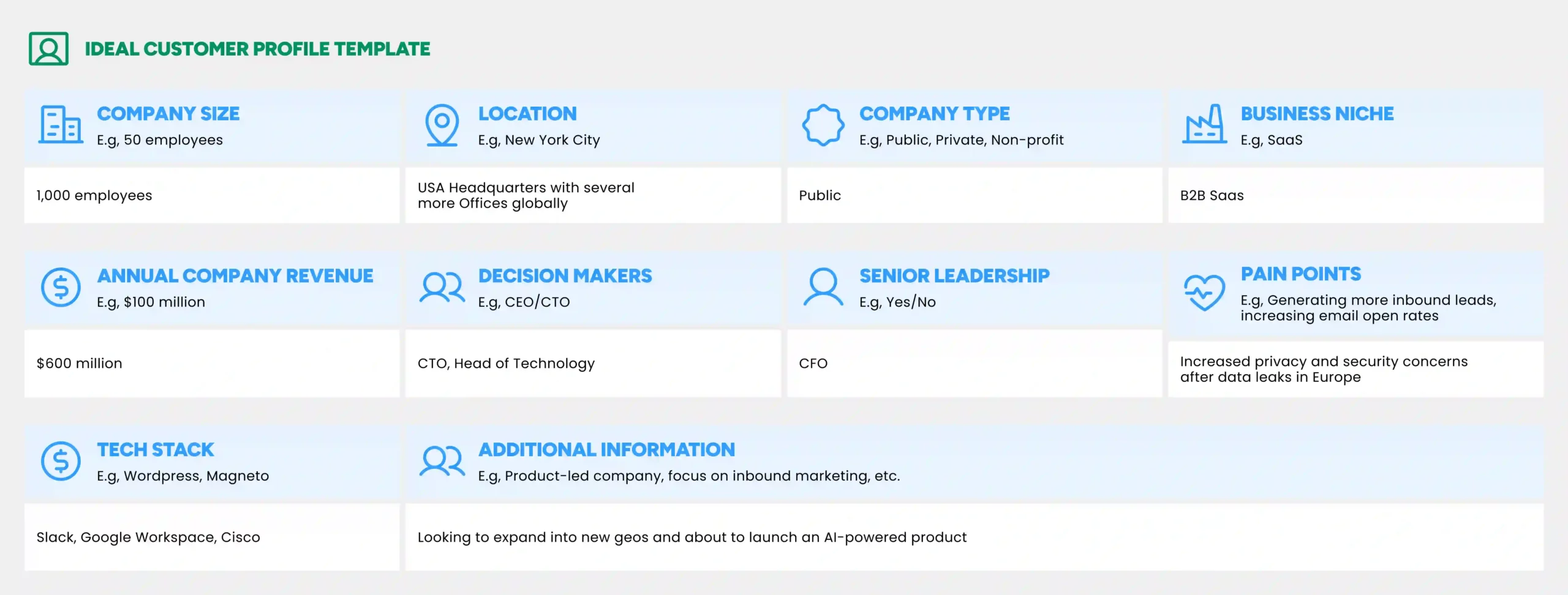
Once you’ve got your objectives clear and know who your ideal customers are, you need to figure out how to sort through all those leads.
See, lead qualification is basically just figuring out which people are actually gonna buy something. It’s super important because, let’s face it, you don’t wanna waste time chasing folks who’ll never convert.
Better to put your energy where it counts, right? Focus on the ones who might actually become paying customers.
Knowing your ICP will also help you target leads that fit your offers. Campaigns with well-defined target audiences consistently outperform broader approaches in both lead quality and conversion rates.
3. Qualify Your Leads
Leads are the key to your campaigns. As we’ve always highlighted, not all leads are created equal.
Look, the campaigns that really nail it don’t just blabber on about features and specs. Nobody cares about that stuff upfront! What works is when you address the actual headaches these personas are dealing with day-to-day.
When you get what keeps them up at night, you can craft messages that hit home. Like, “Hey, I see you, I get your problem” kind of stuff. That personal connection is what turns heads.
Typically, leads progress through several qualification stages as they move through your funnel:
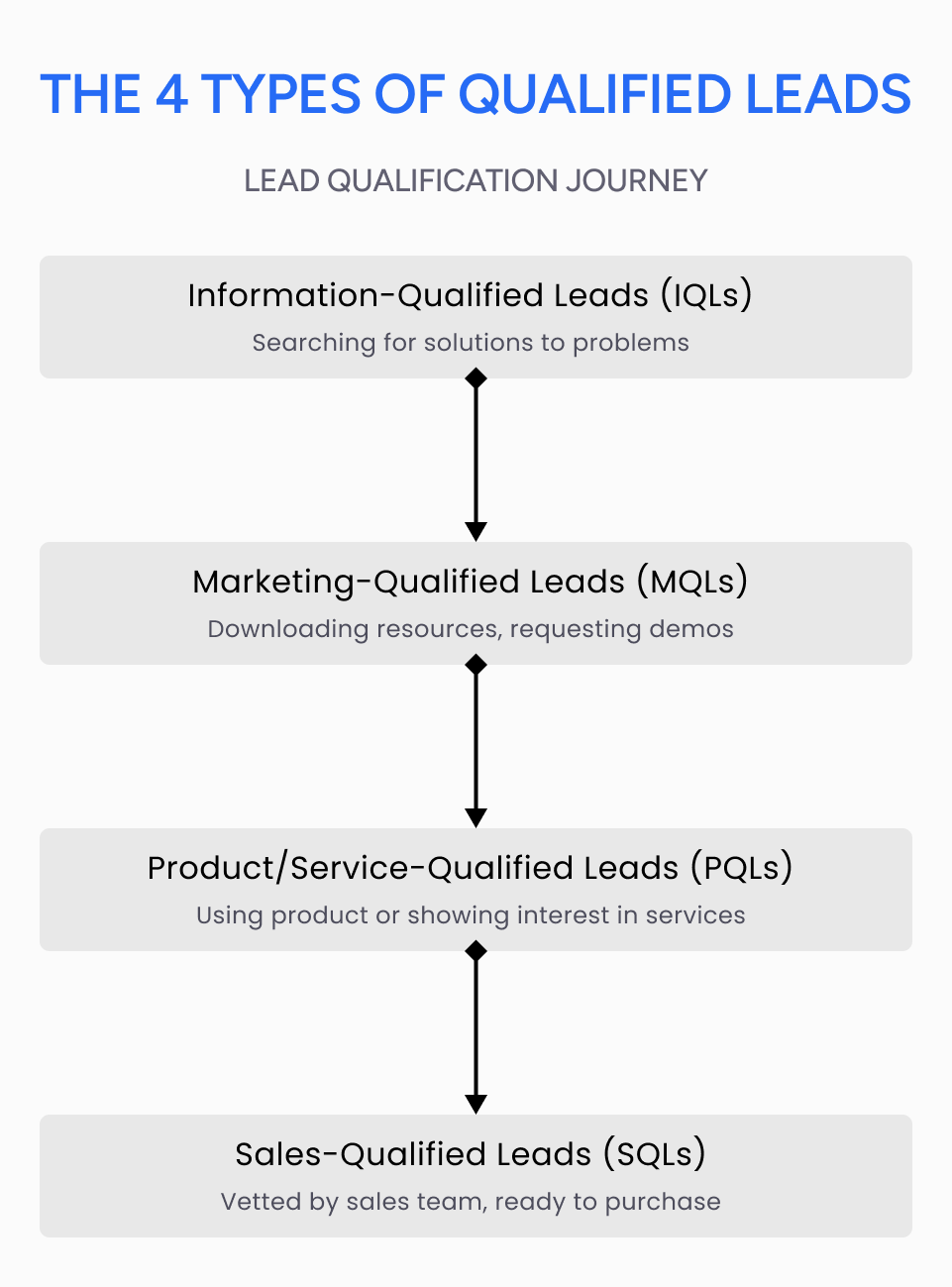
- Information-Qualified Leads (IQLs): These are leads that came across your business while searching for a solution to a problem. They may have considered your content helpful and could continue to engage.
Example of IQL:
Plumbing Co.’s article tops search engines for “how to find plumbing issues.”
A prospect lead, let’s call him Ross, finds his house has plumbing issues. He searches for possible causes and quickly finds Plumbing Co.’s article.
- Marketing-Qualified Leads (MQLs): These leads download templates, request demos, and sign up for a checklist. They have shown interest and are ready to take action. They are also more likely to answer longer lead forms to help qualify leads that fit your ICP.
Example of MQL:
Ross has passed the information-qualified lead stage and is now being qualified for further marketing. Because of the article’s popularity, Plumbing Co. included a PDF checklist of common house plumbing issues as a lead magnet in the article.
Ross decided he’d like to check the issues himself, so he signed up to get the checklist and looked around his house. He has now become a marketing-qualified lead.
- Product/Service-Qualified Leads (PQLs): Prospects who have used your product or shown interest in your services suggest they’re ready to become paying customers. They are primed to take a sales pitch and will decide to purchase soon.
Example of PQL:
Unable to resolve his plumbing issue, Ross considers his options: waste time trying to figure it out himself or look for a plumber?
Because he signed up for the checklist, Ross is now part of a targeted campaign offering a free assessment.
As Ross continues to find a solution, his web search results in an ad for Plumbing Co.’s free assessment due to remarketing ads. Because he’s familiar with the company’s name, he signs up for it.
Since Ross signed up for a free assessment, he may consider hiring a plumber. As a service-qualified lead, he will likely schedule a plumbing maintenance appointment directly. Sending him to a lead capture page for this service is a good strategy for this type of lead.
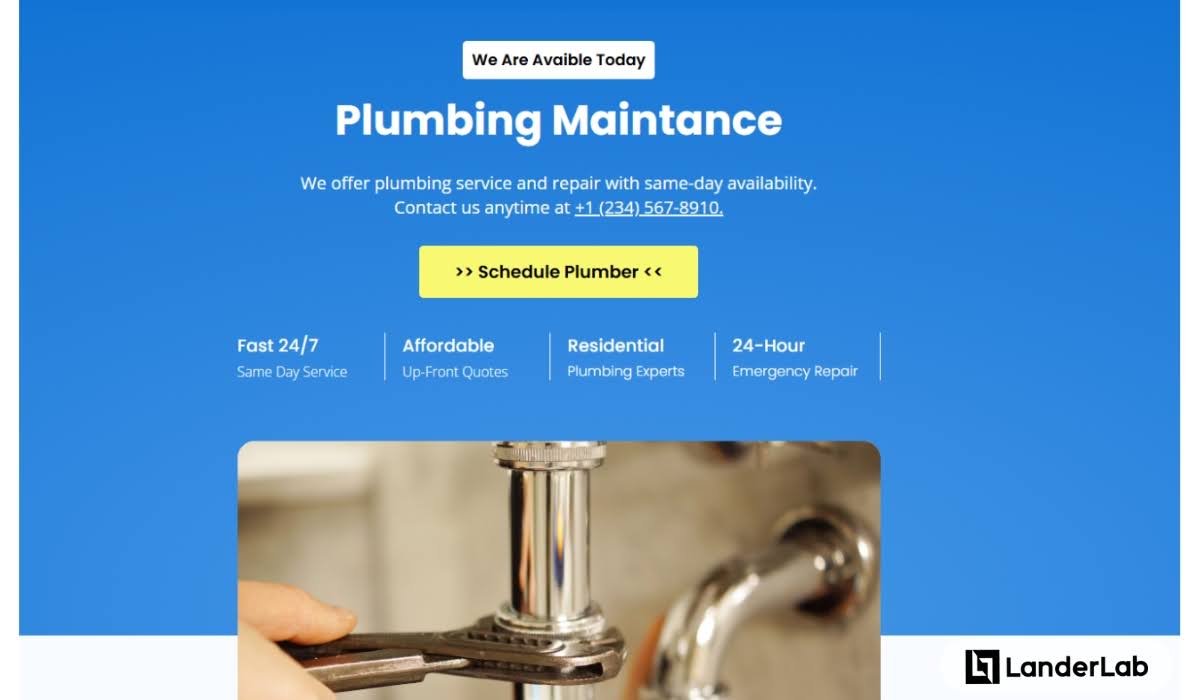
- Sales-Qualified Leads (SQLs): These are leads vetted by the sales team. They show strong purchase intent and match your ideal customer profile. These people have clearly expressed interest in what you offer. This often happens through consultations or when they ask for specific information about your services.
Example of SQL:
If Ross finds the free assessment helpful and schedules a service appointment, he will be a Plumbing Co. customer. The lead generation campaign is successful!
For a more detailed breakdown of lead qualification strategies and scoring methods, check out our dedicated article on lead qualification techniques.
Remember, proper lead qualification makes sure your team spends time nurturing the right prospects. This helps you avoid chasing leads who aren’t a good fit for what you offer.
4. Create Compelling Lead Magnets that Deliver Real Value
Now, it’s time to focus on what you’ll offer prospects in exchange for their contact information. This is where lead magnets become crucial to your campaign’s success.
Millions of free resources compete for your audience’s attention, so you must elevate your lead magnet game beyond generic offerings. Leads are attracted to value, so magnetize them with a compelling offer.
The most effective lead magnets share three essential characteristics:
- Answer to Needs: They need to be spot-on relevant to what your audience actually needs, those pain points you figured out when building your customer profile.
- Value: They better deliver some real value right away, or people just won’t bite. Nobody’s giving up their email for fluff anymore! Make sure whatever you’re offering actually helps solve a real problem they’re facing today.
- Match the Stage in the Buying Journey: Don’t forget to match your offer to where they are in their journey—someone just learning about their problem needs different stuff than someone ready to buy.
Here are some examples of high-converting lead magnet formats:
- Quick-win checklists that tackle one specific challenge
- Video content with embedded lead capture forms
- Expert interviews with gated supplementary resources
- Interactive quizzes that provide personalized insights
- Free consultations or assessments that showcase your expertise
- Webinar or virtual event registrations
- Product demonstrations or limited free trials
- Calculators and Free Quotes
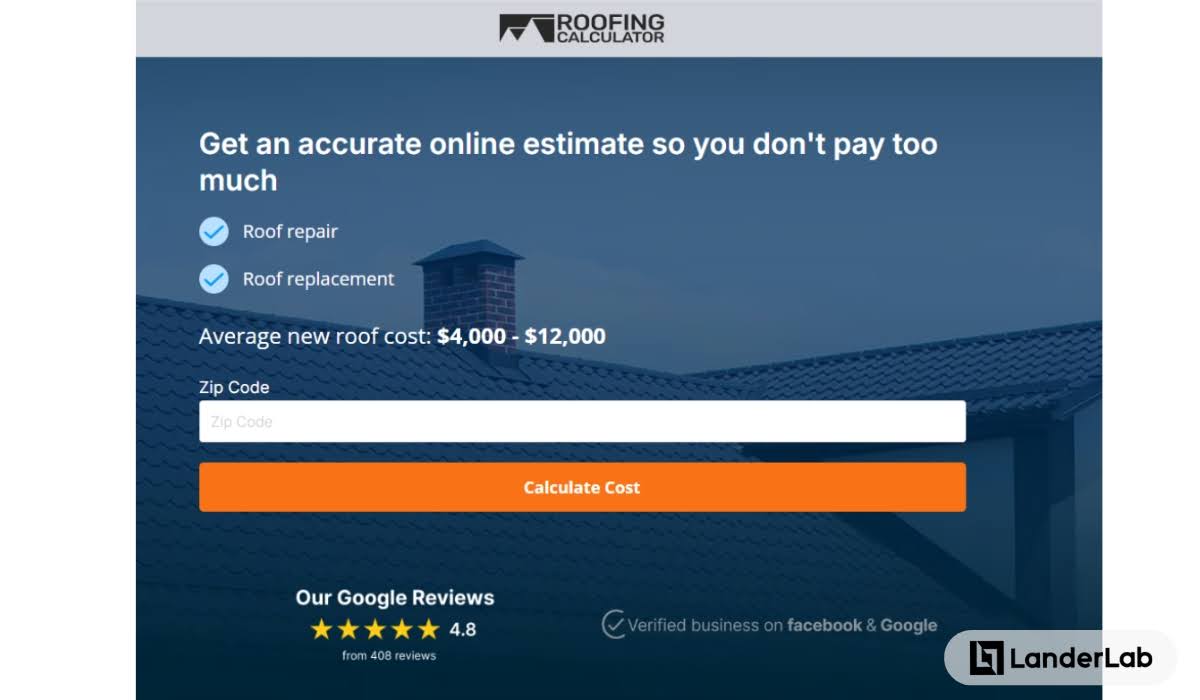
While the old standbys like ebooks and whitepapers still work okay, smart marketers are killing it with stuff that gets people involved and feels made just for them. You have to think outside the box these days—there’s just too much content noise out there to blend in with the crowd.
You need something that grabs attention and makes people stop scrolling. You typically deliver these offers through a dedicated landing page focused on conversion and strategic promotion across multiple channels.
Ready to Build a High-Converting Lead Gen Campaign?
5. Choose an Effective Marketing Strategy
Lead generation typically falls under two broader marketing approaches: inbound and outbound. Understanding the differences between these strategies will help you choose the right mix for your campaign.
Inbound Lead Generation Approach
Inbound marketing is a strategy that focuses on attracting potential customers through content and experiences made for them. Instead of interrupting your audience with direct promotions, you create helpful content that addresses their needs. This naturally draws them to your brand.
Many media options exist for lead generation—from email marketing to social media to content downloads. Research shows that businesses getting more than 60% of their leads online are twice as profitable as their competitors.
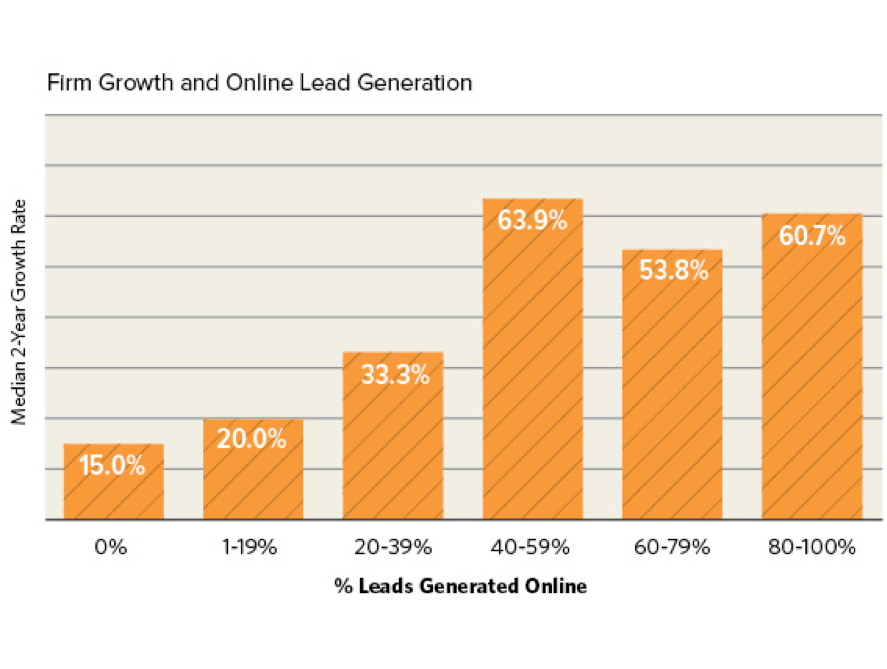
Image Source: Hingemarketing.com
In our example, Plumbing Co. used inbound marketing campaigns. This approach captures leads looking for solutions tailored to their needs. Rather than interrupting prospects, inbound methods draw visitors in naturally.
Inbound marketing channels include:
Content Marketing – Blog posts, guides, and videos that teach your audience while showing your brand as an expert. Focus on creating content that addresses your audience’s specific challenges and questions.
Search Engine Optimization – SEO brings steady organic traffic to your content when done well. Start with keywords that show buying intent. These include branded searches, comparison searches, and category research terms. Then move on to broader topics your audience cares about.
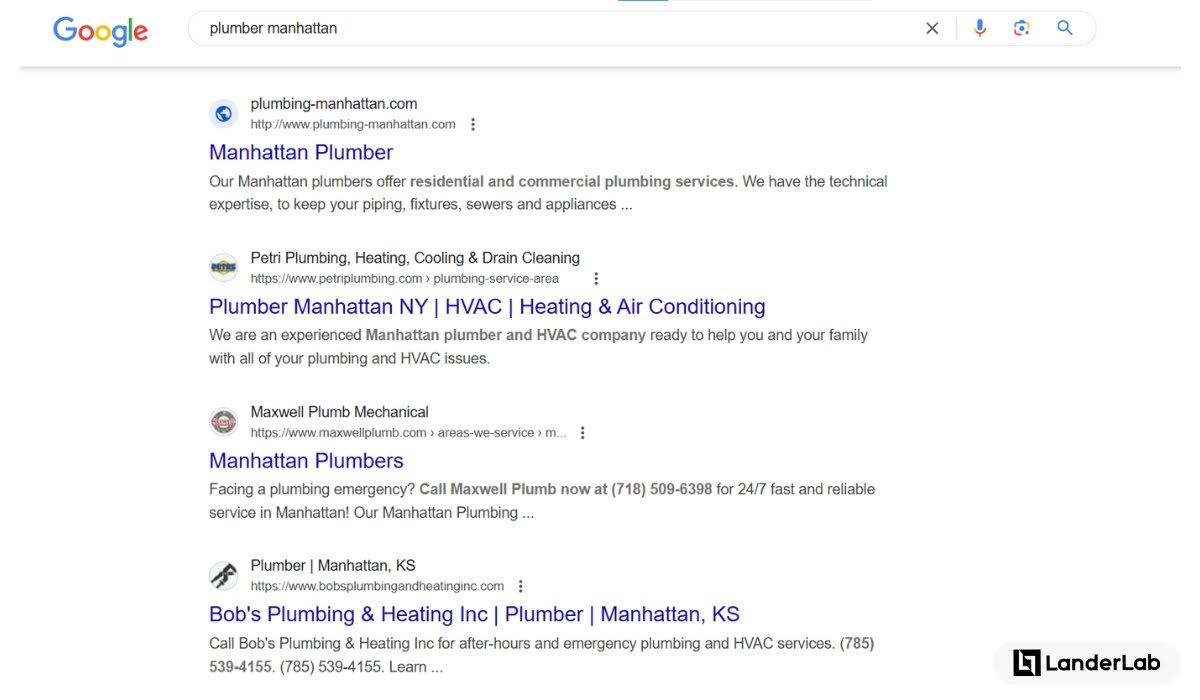
Email Marketing – Though it’s one of the oldest digital channels, email is still one of the most effective ways to nurture leads. This happens through personalized content that provides value.
Webinars and Events – These interactive formats help establish expertise. They also help gather useful information about what attendees are interested in and what problems they face.
Inbound lead generation builds trust. It also establishes your company as an authority in your field. This often results in higher-quality leads that more easily become customers. The downside is that it usually takes more time to show results than outbound methods.
Outbound Lead Generation Approach
Outbound marketing is an old-school way where businesses reach out directly to possible customers. It spreads your message to many people to build awareness and create interest. This often includes people who aren’t looking for what you sell yet.
For example, if Ross got a call from Plumbing Co. about their services before he ever looked for a plumber, that’s outbound lead generation. This method finds leads by reaching out to people who might not be searching for your product on their own.
Outbound marketing channels include:
Cold Calling – While some think it’s old-fashioned, planned phone calls can still work well for certain businesses, especially in B2B, where each new client is worth a lot.
Direct/Cold Email Campaigns – These are first-time emails to people who haven’t signed up to get messages from you yet. Be careful with this, though, because just like our sample below, your messages can easily be marked as spam.
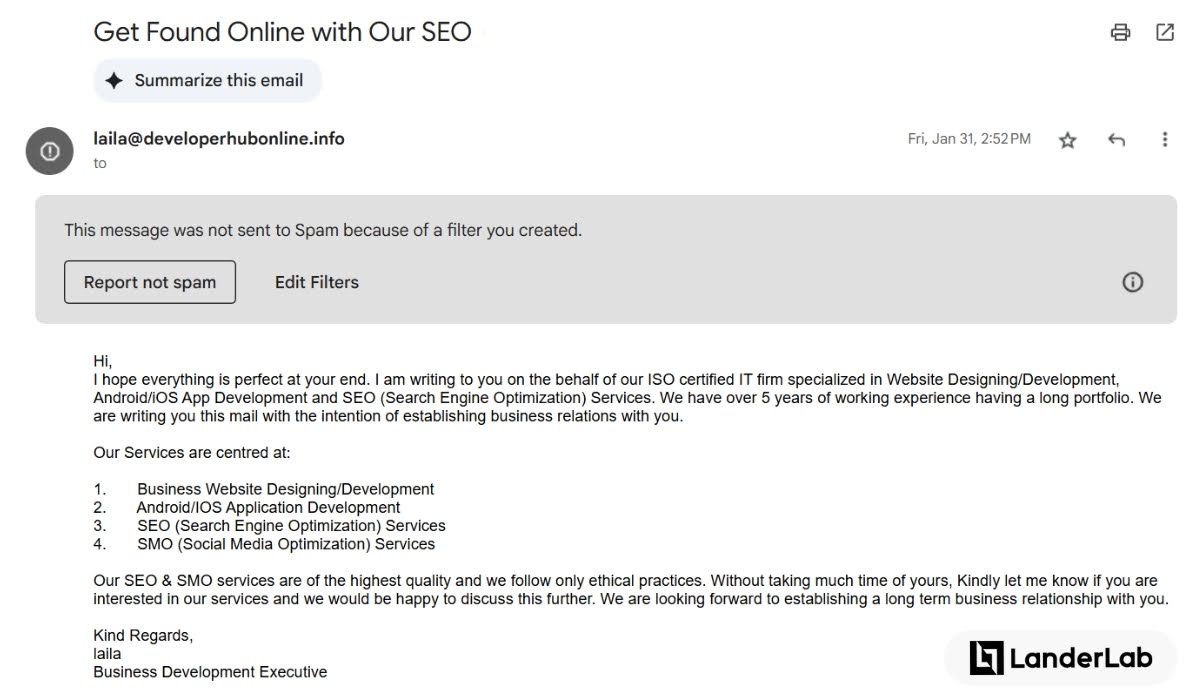
Display Advertising – Display ads put pictures and videos on websites and apps to reach people while they’re looking at other stuff, showing your product to people before they start searching.
Affiliate Marketing – This teams up with people or companies who promote your products to earn money when they bring in leads or sales.
Traditional Advertising – Old-school channels like print, radio, and mail are still good for reaching certain groups or spreading awareness when they include clear online calls-to-action and good tracking.
Direct Mail – In today’s digital world, paper mail can help you stand out. It’s a nice way to connect with customers.
Trade Shows – In-person events let you meet face-to-face with possible customers, though they cost more per lead than many online methods.
While some see outbound methods as pushy, they can bring quick results and work well for certain businesses or groups. They work best when reaching people who need your product right away or when entering new markets where few know your brand.
Inbound-Outbound Hybrid Approach
A hybrid approach mixes both inbound and outbound marketing to create a complete lead system. This balanced method uses the trust-building of inbound with the quick reach of outbound.
When done right, hybrid plans help businesses attract leads who are actively searching while also reaching possible customers who don’t yet know they need your product.
This works well for businesses with different target groups or complex buying journeys.
Search Engine Marketing – SEM gives quick visibility through paid search ads, mixing the search-based nature of inbound with the targeted reach of outbound.
Social Media Marketing – Social media mixes free content that builds community (inbound) with paid ads that reach specific groups (outbound) for a complete lead approach.
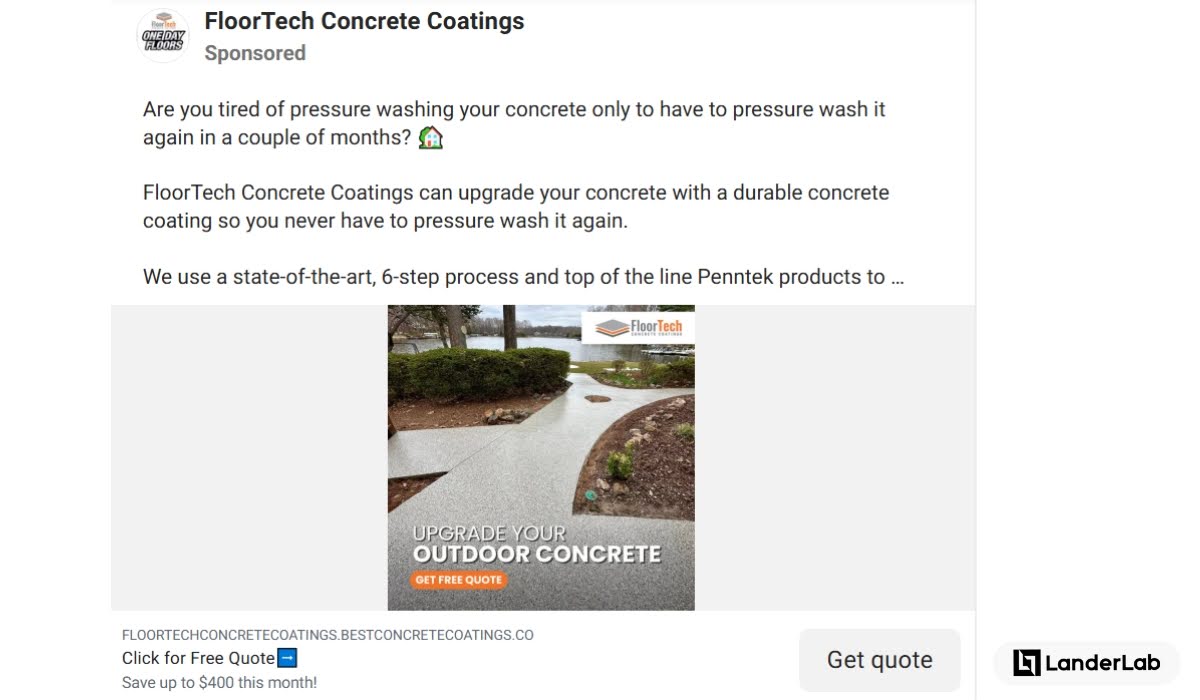
Remarketing – Remarketing shows personal ads to people who visited your website as they browse other sites, creating multiple touchpoints with people who already showed interest.
Influencer Marketing – This uses trusted voices to reach built-in audiences and give real info about your products through partnerships with relevant experts.
6. Analyze Campaign Results and Calculate ROI
Don’t wait until your campaign ends to begin analyzing performance. Real-time analytics allow you to identify what’s working and what isn’t while there’s still time to make adjustments.
Core Metrics
Begin by tracking the core metrics that align with your initial campaign objectives:
- Conversion rates at each stage of your funnel
- Cost per lead across different channels
- Lead quality and qualification rates
- Time to conversion
- Attribution patterns showing which touchpoints drive conversions
Recommended Reading: 30 Most Important Lead Generation Metrics & KPIs
Qualitative Insights
Beyond these quantitative measures, dive deeper into qualitative insights:
- Which messages and creative elements resonate most with your audience?
- Are specific segments responding better than others?
- What feedback are you receiving from prospects during the sales process?
- Which objections are your sales team encountering most frequently?
Business Impact
Next, calculate your campaign ROI to understand the true business impact:
- Total campaign cost (including media spend, resources, and technology)
- Value of generated leads (consider using lifetime value estimates for accurate projections)
- Conversion rates from lead to customer
- Average deal size or customer value
7. Nurture Leads
Lead generation campaigns should never stop at simply collecting leads.
Don’t lose valuable leads by leaving them hanging. Nurturing should be a part of your lead generation efforts, continuing until a lead becomes an actual client.
This interaction demonstrates the difference between a well-planned marketing strategy and one just there to get emails.
Going back to one of our previous examples, remember how Move Inc. sends emails about relocating and newsletters about their services? Providing value-added information is a strategic way to nurture leads.
Follow-up is the most crucial aspect of running a lead generation campaign. It is the last step to successfully turning leads into loyal customers.
Tips to Increase Your Chances of Success with Lead Generation
So, you’ve followed the 7-step process and are now running your lead generation campaigns with creative and effective strategies.
What’s next? Optimizing! Here are some factors to consider to optimize your lead campaign for a successful run!
Take Advantage of Lead Generation Tools
Marketing teams should use tools to make their process of generating qualified leads easier.
Such tools include landing page builders, form creators, lead scoring systems, and behavioral tracking capabilities that provide deeper insights into prospect engagement and sales readiness.
Examples of lead generation tools that you can use are LanderLab, Hubspot, LeadsBridge, and OptinMonster.
Integrating these technologies, such as marketing automation systems, with your CRM creates a seamless workflow between marketing and sales teams.
Experiment with Engaging Content & New Formats
Start small before making major investments in new formats. Here’s an example of enticing users to win a jackpot by spinning the wheel.
Step outside your comfort zone! Experiment with different formats to capture potential customers’ interest. Experimental and engaging content includes interactive before-after sliders and social challenges.
Be warned that these types of content are best incorporated into a regular strategy, so don’t depend on them for your entire lead generation strategy.
Personalize Your Lead Magnets and Emails
Develop industry-specific guides, case studies, or white papers. Create targeted resources for specific audience segments. Be the comprehensive resource to your industry audience.
If you are marketing to MQLs (usually people already on your email list), you probably have their names by now. Use dynamic content to personalize emails and adapt offers based on user behavior or create limited-time offers.
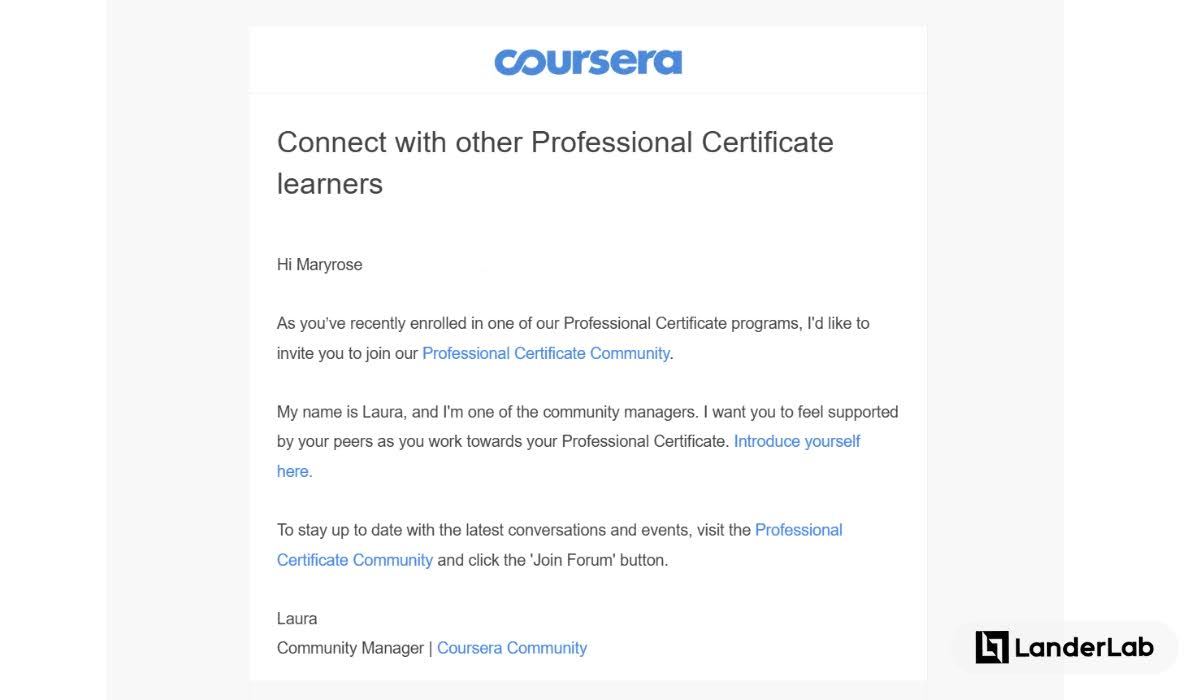
Solve Immediate Problems
Ask: “What pressing challenge can I help solve today?” and then solve it. Attract potential customers by providing instant value, such as practical resources like templates, checklists, and calculators.
These practical resources tend to be immediately actionable, so leads are persuaded to take the next action. Because the audience wants fast solutions to their problems, they also don’t like to be overwhelmed. Balance comprehensive information with ease of use.
Maintain Multichannel Brand Consistency
Coordinate messaging across all marketing channels with consistent visual branding and tone to maintain multichannel brand consistency. As you progress in your campaigns, user activity patterns will emerge.
From these patterns, you can schedule lead generation activities during peak engagement periods for maximum impact. To implement this approach effectively, utilize integrated marketing calendars or social media management tools for campaign coordination.
Test and Optimize Continuously
Record your data. Monitor which campaigns generate high-quality leads and which you can drop to save resources. For example, implementing split testing for lead magnets and landing pages helps identify what resonates best with your audience.
Use that data and analyze insights to make informed improvements that enhance conversion rates and lead quality. View optimization as an ongoing process, not a one-time task, as market conditions and customer preferences continually evolve.
Build Trust Throughout the Process
Remember, business is about building trust with people. Focus on long-term customer relationships rather than quick wins. Respect privacy preferences and be transparent about how you handle personal data to establish credibility even from the first interaction.
Deliver on promises made during lead capture to build reliability and foster positive associations with your brand. This establishes your business as a helpful resource rather than just another sales channel.
Leverage AI and Automation in Your Strategy
Implement AI-powered lead scoring to identify your most promising prospects based on behavioral patterns and engagement signals that humans might miss.
Use conversational AI through chatbots and virtual assistants to qualify leads 24/7, providing immediate responses while collecting valuable qualification data.
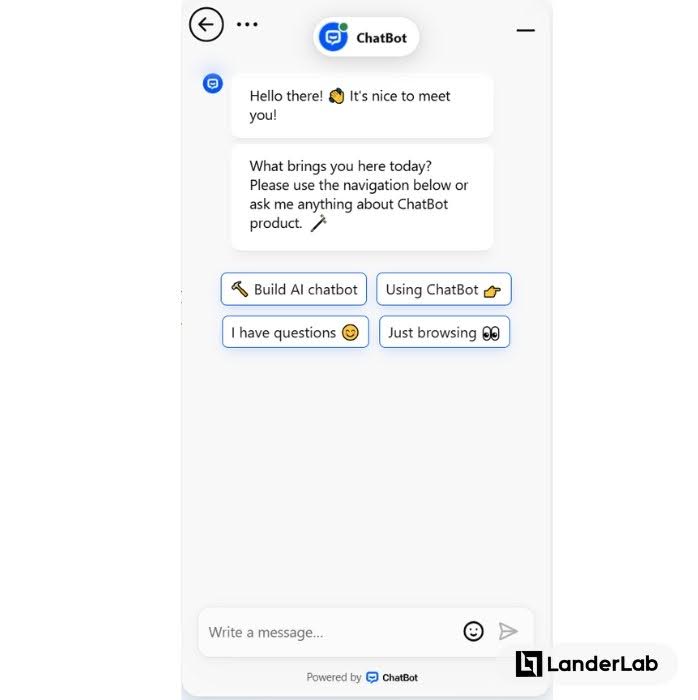
Automate personalized follow-up sequences triggered by specific actions, ensuring timely communication without overwhelming your team.
In 2026, the most successful campaigns will be those that balance AI efficiency with human touchpoints at critical decision stages.
Navigate Compliance and Privacy Regulations Effectively
Build privacy compliance into your lead generation process from the start, with clear consent mechanisms that meet GDPR, CCPA, and other regional requirements.
Create transparent data policies that explain exactly how you’ll use prospect information, building trust while meeting legal obligations.
Implement data minimization principles by collecting only essential information at initial touchpoints and progressively gathering more details as the relationship develops.
Remember that privacy-focused lead generation isn’t just about avoiding penalties—it demonstrates respect for prospects and differentiates your brand in an increasingly privacy-conscious marketplace.
Conclusion
When you keep your lead generation strategies creative, your business stands out in crowded, competitive markets.
It creates memorable experiences that capture attention when traditional approaches fail. Give your audience an “Aha!” moment.
These strategies create a sustainable system for predictable and foreseeable business growth.
They build stronger relationships with prospects before they become customers, shorten sales cycles through more effective nurturing, and improve conversion rates with better-qualified leads.
Follow the 7-step process and combine it with proven strategies to strengthen your lead generation campaigns against ever-changing market conditions in 2026 and beyond.

